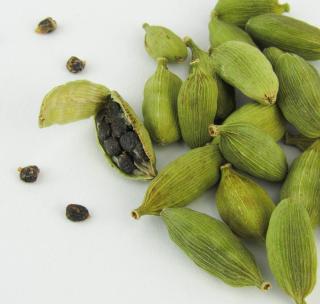

Cardamom, also called green cardamom or cardamom herb, is a herbaceous rhizome plant that belongs to the Zingiberaceae family.
The plant provides a spice that bears the same name, and is part of the same family as ginger and turmeric.
Native to the coast of Malabar, in India, this plant is often used in Indian and Asian gastronomy, and also, surprisingly, Scandinavian cooking, too.
Cardamom has the reputation of being the third most expensive spice in the world, just behind saffron and vanilla.
Use of cardamom goes back to ancient times and many health benefits have been associated to it. Which would they be? How should it be used?
There are signs that cardamom has been in use since the 7th century before Christ. It was domesticated in Southern India from wild plants that had been collected in the wild. In Europe, it’s been proven that the spice has been used since the Middle Ages.
Cardamom has a very powerful fragrance. The dose must thus be respected before being used.
In Europe, it most often appears as an ingredient to bake ginger bread. In India, it’s highly appreciated to flavor coffee or tea. Cardamom has the result of neutralizing caffeine.
Cardamom has also been used for ages in Ayurveda medicine. This Indian tradition is considered the most ancient holistic medicine in the world. Its health benefits and therapeutic properties are numerous.
 For most of recorded history, cardamom has been used for its effectiveness in treating digestive disorders. It is recommended to treat heartburn, constipation, liver and gall bladder infections, and intestinal gas.
For most of recorded history, cardamom has been used for its effectiveness in treating digestive disorders. It is recommended to treat heartburn, constipation, liver and gall bladder infections, and intestinal gas.
This plant has proven its worth for:
– the treatment of disorders such as colds, cough and bronchitis.
– effectively soothing throats and mouth pain.
A natural stimulant that can induce a light euphoric high, cardamom is also very useful when dealing with urinary system problems.
Cardamom seeds also help combat loss of appetite by enhancing stomach health and stimulating digestive juice production.
On top of promoting fresh breath, its many properties make it a close friend of persons initiating a weight loss diet.
The simplest way to ingest cardamom is to use it to prepare infusions. Use the seeds of the plant to flavor your tea and your coffee. For that, steep 3 or 4 seeds for about 5 minutes.
It’s also possible to crush 1 teaspoon of cardamom seeds. Steep them in 8 fluid ounces (25 cl) boiling water for 10 minutes and then drink it.
To make your breath smell fresh and fragrant, chew its seeds, nothing more!
This powerfully flavorful herb, with lemony fresh tones, can also enhance your meals.
Cardamom is a perennial plant with evergreen leafage that can grow 6 to 10 feet (2 to 3 meters) tall.
Careful: it can’t survive temperatures lower than 40°F (5°C). It’s highly recommended to cultivate it in a hot greenhouse or indoors; preferably in a luminous spot but not in direct sun.
Cardamom blooms at the end of spring. Fruits mature in September and can be harvested a bit before they’re fully mature. The first harvest takes place three years after planting.
Good to know
Cardamom is said to be without danger and with very few side effects.
Ingesting this plant doesn’t increase risks for pregnant women and nursing mothers. If using them for medicinal purposes, it is however better to consult a physician.
©scym, ©КаринаПанченко